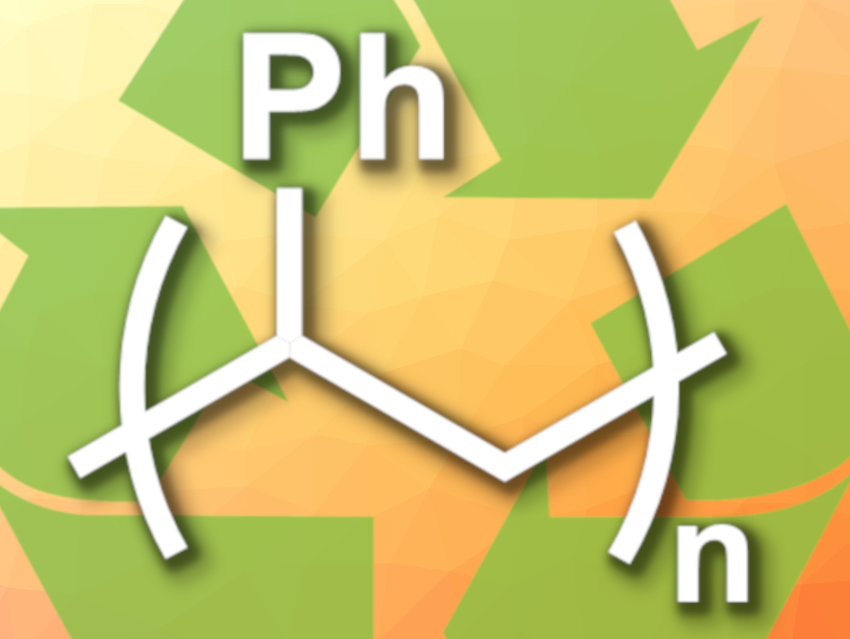Plastic waste poses a serious problem for the environment. Recycling can help to mitigate this problem, but mechanically recycled plastics often have limited applications due to their degrading quality. The chemical recycling of polymers, in which they are converted to their monomers or other useful chemical feedstocks, can be a promising alternative in this context. Efficient, selective, low-cost methods for the chemical recycling of polymers are, thus, interesting research targets. Polystyrene (PS), for example, is widely used but fairly inert, which makes it difficult and expensive to chemically recycle.
Eric J. L. McInnes, The University of Manchester, UK, Xiaotian Qi, Wuhan University, Hubei, China, Jianliang Xiao, University of Liverpool, UK, and colleagues have developed an acid-catalyzed protocol for the chemical recycling of polystyrene waste to valuable chemicals under visible light and 1 bar of O2. The team used p-toluenesulfonic acid monohydrate (pTsOH·H2O) as a catalyst and violet-blue light (405 nm) to promote the reaction. A benzene/CH3CN mixture was used as the solvent.
Under these conditions, PS was converted to formic acid, benzoic acid, and acetophenone. Triflic acid (HOTf), methanesulfonic acid (CH3SO3H), and sulfuric acid (H2SO4) also gave the desired products. The team used the method for the aerobic degradation of commercially available PS and PS waste. All PS materials were readily converted to the desired products. PS waste, for example, gave formic acid in 58–64 % yield (NMR), benzoic acid in 38–48 % isolated yield, and acetophenone in 2–3 % yield (NMR). The researchers also used the reaction in a continuous-flow microreactor, obtaining products at a gram scale.
- Chemical Recycling of Polystyrene to Valuable Chemicals via Selective Acid-Catalyzed Aerobic Oxidation under Visible Light,
Zhiliang Huang, Muralidharan Shanmugam, Zhao Liu, Adam Brookfield, Elliot L. Bennett, Renpeng Guan, David E. Vega Herrera, Jose A. Lopez-Sanchez, Anna G. Slater, Eric J. L. McInnes, Xiaotian Qi, Jianliang Xiao,
J. Am. Chem. Soc. 2022.
https://doi.org/10.1021/jacs.2c01410

![Synthesis of [c2]Daisy Chains via Mechanochemistry](https://www.chemistryviews.org/wp-content/uploads/2025/04/202504_RotaxanesWithSolidStateMechanochemistry-125x94.png)

